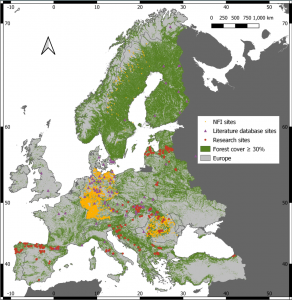New Study Reveals Substantial Carbon Mitigation Potential in European Forests
PRAGUE , PRAGUE, CZECH REPUBLIC, August 7, 2024 /EINPresswire.com/ -- A new study has highlighted the significant role that primary forests in Europe can play in carbon mitigation. Researchers from Czech University of Life Sciences measured and collated tree inventory data from primary forest sites, drawing from research studies, literature, and forest inventories. The comprehensive analysis covered 7,982 sites, 288,262 trees, across 27 countries, spanning boreal, temperate, and subtropical Global Ecological Zones within Europe.
The study underscores the importance of establishing a reference level for carbon accounting in the land sector to accurately calculate past carbon losses and potential gains. The carbon carrying capacity, represented by the carbon stock in primary forests, serves as an ecologically-based reference level. This reference allows for the estimation of mitigation potential through the protection and restoration of forests to enhance their carbon stocks.
Key findings from the study reveal that the total biomass carbon stock per hectare (including above- and below-ground and dead biomass) in primary forests is, on average, 1.6 times larger than modelled global maps for primary forests, and 2.3 times larger for all forests. Large trees, with a diameter greater than 60 cm, account for 50% of this biomass, underscoring their role as critical carbon reservoirs.
The research also identified the carbon stock foregone due to harvesting, ranging from 12% to 52%, highlighting the mitigation potential through improved forest management. The estimated carbon gain by protecting, restoring, and promoting the ongoing growth of existing forests is equivalent to 309 megatons of carbon dioxide equivalents per year. This potential gain surpasses the current forest carbon sink and is comparable to the European Green Deal's 2030 target for carbon dioxide removals.
This study highlights the urgent need for policymakers, conservationists, and stakeholders to prioritize forest protection and restoration as a key strategy in combating climate change. The results provide a strong scientific basis for developing policies and initiatives aimed at maximizing the carbon sequestration potential of Europe's forests.
Karla Mrackova
Czech University of Life Sciences
+420 224 383 219
email us here

